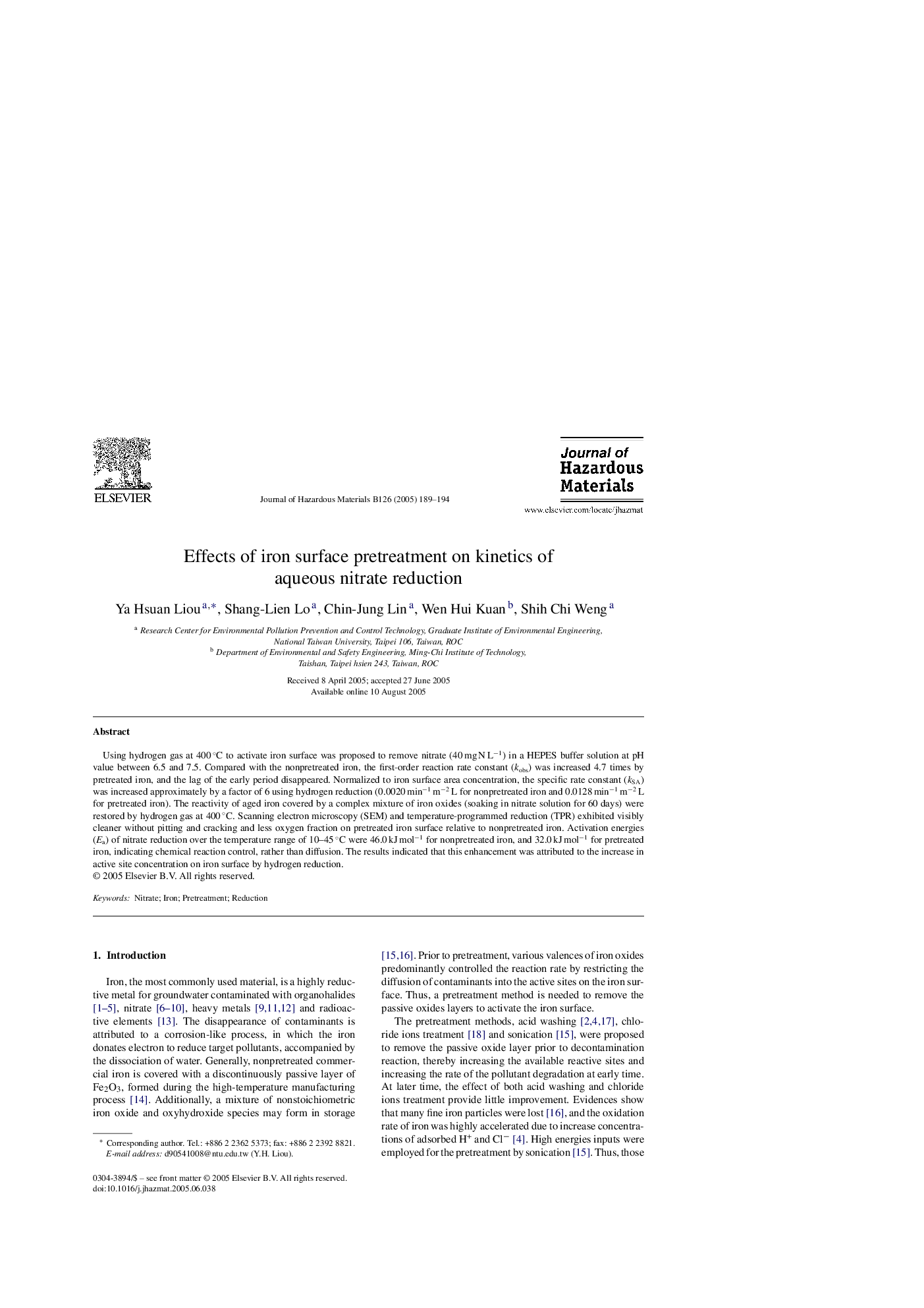| Article ID | Journal | Published Year | Pages | File Type |
|---|---|---|---|---|
| 9674110 | Journal of Hazardous Materials | 2005 | 6 Pages |
Abstract
Using hydrogen gas at 400 °C to activate iron surface was proposed to remove nitrate (40 mg N Lâ1) in a HEPES buffer solution at pH value between 6.5 and 7.5. Compared with the nonpretreated iron, the first-order reaction rate constant (kobs) was increased 4.7 times by pretreated iron, and the lag of the early period disappeared. Normalized to iron surface area concentration, the specific rate constant (kSA) was increased approximately by a factor of 6 using hydrogen reduction (0.0020 minâ1 mâ2 L for nonpretreated iron and 0.0128 minâ1 mâ2 L for pretreated iron). The reactivity of aged iron covered by a complex mixture of iron oxides (soaking in nitrate solution for 60 days) were restored by hydrogen gas at 400 °C. Scanning electron microscopy (SEM) and temperature-programmed reduction (TPR) exhibited visibly cleaner without pitting and cracking and less oxygen fraction on pretreated iron surface relative to nonpretreated iron. Activation energies (Ea) of nitrate reduction over the temperature range of 10-45 °C were 46.0 kJ molâ1 for nonpretreated iron, and 32.0 kJ molâ1 for pretreated iron, indicating chemical reaction control, rather than diffusion. The results indicated that this enhancement was attributed to the increase in active site concentration on iron surface by hydrogen reduction.
Keywords
Related Topics
Physical Sciences and Engineering
Chemical Engineering
Chemical Health and Safety
Authors
Ya Hsuan Liou, Shang-Lien Lo, Chin-Jung Lin, Wen Hui Kuan, Shih Chi Weng,
